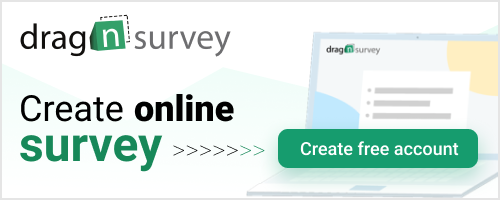Ambiguous questions are some of the most dangerous elements of a survey. They can ruin the reliability and the usefulness of the results, which could mean that either the survey has to be carried out again or your business takes actions that are counterproductive. Therefore, ambiguous queries need to be avoided at all times.
There are various ways to avoid this type of query in your surveys. However, it takes time, patience and some level of writing skills. So, here is our quick guide to ambiguous questions and how to avoid them in your surveys.
>> Create your Online Survey with Drag’n Survey, click here

What Is An Ambiguous Question?
The first thing you need to do is identify and understand what an ambiguous question is. There are some who don’t understand the difference, and some people who mistakenly mark queries as ambiguous when they’re not.
An ambiguous question is defined as one where there is no specific query, it could have more than one meaning, asking for several responses, or not clearly defining the subject/object. Here are some examples with reasons why they aren’t good questions:
- Did you see the film last weekend? – what film? where did they see it? How much of it did they see? Did they have to watch it or just know that it was on at the cinema/on television?
- Did you enjoy it? – what were they supposed to enjoy? Could they have liked an aspect of it but not enjoy the experience?
- Have you bought anything in the past three months? – this is rather obvious, most people have bought something in the past week, let alone three months. But where did they make the purchase? What did they buy? Why is it applicable to the survey? How did they pay?
By using ambiguous questions within a survey, you can get a wide range of responses. For instance, ‘did you enjoy it’, many people might say no. If it was about a new ice cream they could have enjoyed the flavor, but the texture was unpleasant, or they could have enjoyed the ice cream but the environment was too noisy/crowded for them.
The Dangers Of Ambiguous Questions
The problem is that the information you get back can be equally as ambiguous. It can also hold little value. For instance, ‘did you enjoy it’ could lead to either a yes or no response. However, if the majority of people don’t like it, you still don’t know why they don’t like it.
This means that you can make mistakes with business decisions. You could completely change a recipe, activity or product that customers might have appealed to the majority but didn’t like a certain aspect of. This can damage your business’ reputation and force customer satisfaction to drop further.
Simply put, ambiguous questions lead to a limited amount of information. And as information is key to decision making, you’re putting your brand at a disadvantage.
How To Avoid Ambiguous Questions?
There are many ways of writing better questions. Here are some tips for your surveys to help you get more data from them and improve the value of results.
1. Split Questions Into Numerous Parts
One of the biggest errors of ambiguous questions is that they are often asking for too much information in too little space. For instance, ‘did you enjoy it could ask for a wide range of aspects of a product. Instead, you should break down the query into several parts. An example, if it was about ice cream, this set would be better.
- What did you think about the color of the product?
- What did you think about the texture of the product?
- What did you think about the flavor of the product?
- What did you think about the smell of the product?
These are very specific and can give you an indication about what people did or did not enjoy about the product.
2. Don’t Ask For Yes/No Answers
Only ask for a yes/no response if you’re sure these are the only two answers that are available (like if someone has bought a particular product). For all other questions, you want to give either space for a qualitative response, a scaled answer response (i.e. strongly disliked to strongly liked) or a multiple choice set of answers.
3. Don’t Use Jargon
Jargon is terrible for surveys. It confuses audiences who might not know the proper meaning of the word, and if someone doesn’t understand the term, it makes it ambiguous by default.
4. Be Specific
When speaking about something, don’t rely on luck that the audience knows what you’re referring to. Be specific with the question. For instance:
“Did you see the latest superhero film at the cinema during the weekend of the 4/5th July?”
The more specific you are in your questions, the better the quality of the answers you’ll get.
5. Test Surveys Before Sending Out
Another key aspect is to always test out your surveys before sending them out. Get together a group of audience and see how they respond to your survey. If they seem to struggle, you know that some of the questions may not be worded correctly.
Conclusion
Ambiguous questions are not great for your brand. They provide poor data that can result in you taking action that could harm your business’ operations. Therefore, look at queries before sending surveys out to audiences and ensure that they’re being specific enough to collect the right data.
More about surveys:
Make Better Decisions With Better Data, click here
How Surveys Enhance 360 Degree Feedback, click here
The Role Of Surveys In Creating Benchmarks, click here
The Front-Runners in Online Quiz Technologies, click here
Find Out How You Can Address Your Employees’ Concerns, click here
14 Questions To Ask For Your Customer Satisfaction Survey, click here
